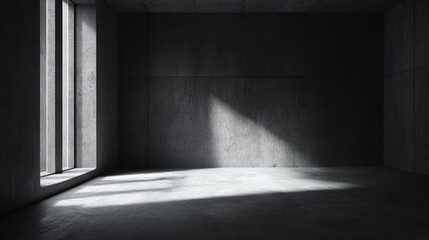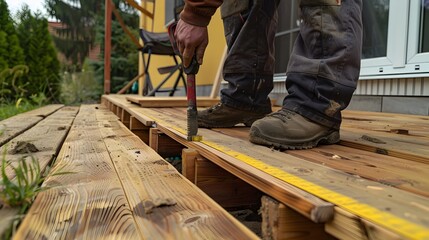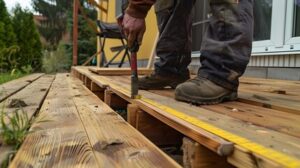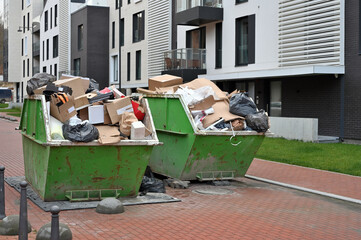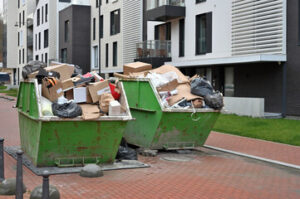McKinney Concrete is the go-to material for constructing roads, commercial parking lots, sidewalks and other large-scale projects. Its ability to withstand compression makes it an ideal choice for heavy-traffic areas and harsh weather conditions.
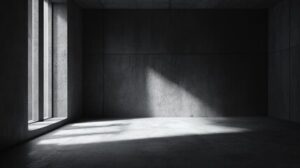
Concrete is made up of a binding material, Portland cement, and aggregates such as sand and gravel. These ingredients are combined with water to form a slurry that can be poured to create structures of varying sizes and shapes.
Concrete is a popular building material that has been in use for thousands of years. It is made from a mix of aggregate (such as sand, gravel or rock), water and cement. The water and cement react with the aggregate to form a hard, dense compound. When properly mixed, poured and compacted, concrete is very strong and can support a great deal of weight. This makes it ideal for constructing buildings and other load-bearing structures. Concrete contractors often use reinforcement to enhance the strength of their work, as this can help prevent cracking and bending under stress.
The strength of concrete can be measured by a variety of methods, including the compressive strength, which is the ability of the concrete to withstand a pressure load. The compressive strength of concrete is rated by the class of concrete, which is determined by crushing a sample cylinder or cube. Concrete with a class of C25 or higher is considered high-strength and can withstand heavy loads.
For more demanding applications, concrete can be reinforced with steel fibers to improve its tensile strength. This type of reinforced concrete is often used in bridges, skyscrapers, and other load-bearing structures. It can also be used in masonry and other applications that require high tensile strength.
Another way to increase the strength of concrete is by using micro-fibers. These fibers are added to the concrete during manufacturing to reduce shrinkage and improve its flexural strength. They are also useful in reducing cracking and lowering the permeability of concrete. The amount of fibers that are added to the concrete depends on the type and size of the fibers.
Adding fibers to concrete can help prevent cracking during the curing process and improve its overall durability. They can also decrease the permeability of concrete, which reduces the amount of water that leaks through it. In addition, they can reduce the rate of deterioration and extend the lifespan of concrete structures. However, it is important to note that the addition of fibers can cause concrete to become more fragile, which could be a problem for some applications.
Durability
Concrete is an extremely versatile material that can be used in a variety of applications. From foundations to bridges, it can be molded into unique shapes and customized with pigments and textures to meet specific needs. It also resists abrasion and impacts, making it ideal for use in traffic areas. Furthermore, it is fire resistant and does not burn or mildew, making it safe for building occupants. In addition to its durability, it is cost-effective and easy to work with.
The durability of concrete is essential for ensuring the safety and longevity of structures. Without adequate durability, concrete can deteriorate quickly, which leads to expensive repairs and a loss of structural integrity. In some cases, the deterioration may even cause structural failure. To ensure that concrete is durable, it must be tested and inspected regularly. Structural engineers must take into account environmental conditions and design criteria when assessing the durability of a concrete structure.
Unlike other materials, concrete can withstand the harshest environments. It is capable of enduring freezing temperatures, thawing cycles, and deicing chemicals. It can also withstand extreme weather and earthquakes. Concrete’s versatility means that it is widely used in both residential and commercial buildings. In addition, it is a highly recyclable material and is used to make roads, sidewalks, and parking lots.
A key factor in determining the durability of concrete is its permeability. High permeability can allow water to penetrate the concrete and affect its internal structure. This can lead to corrosion of reinforcing steel and other problems. Therefore, reducing the permeability of concrete is crucial for improving its durability.
Concrete’s permeability is affected by a number of factors, including aggregate type and grading, curing methods, water cement ratio, and prevailing environmental conditions. Some of these factors have a direct effect on the permeability of concrete, while others are indirect. This is why it is important to conduct a thorough analysis of all factors before selecting an aggregate.
Using a concrete monitoring sensor is an effective way to monitor the strength of your concrete and determine its durability. These sensors can help you save money on costly reworks and repairs by allowing you to know when the concrete has reached the required strength. Moreover, they can help you identify issues like voids or cracks that can cause damage to your concrete structure.
Reliability
Concrete is one of the most common building materials used worldwide. Its non-combustible nature, versatility, and affordability make it a preferred choice for all sorts of structures and buildings. It is also highly durable, meaning that even after prolonged exposure to extreme weather conditions it can still be used in many applications. Moreover, it is a sustainable material and can be easily recycled. This makes it an excellent alternative to traditional construction materials, such as steel and wood.
Structural reliability is a primary consideration when designing new concrete structures. To achieve high levels of structural reliability, it is important to have an accurate understanding of the physical properties of concrete. This can be accomplished by using a non-destructive test, such as ultrasonics. However, these tests require specialized equipment and must be calibrated correctly to obtain reliable results. The results of these tests can be compared to the target reliability index to ensure that the structure will perform well during its service life.
A recent research study examined the structural reliability of a reinforced concrete haunched beam. The experimental results were analyzed using a probabilistic model that considers the impact of uncertainties on the strength of concrete structures. The allowable complementary strain energy Wpo was used as a bound to regulate the amount of plastic damage in the deterministic case, and the reliability index served as a bound for the probabilistic scenario where both the Wpo and the concrete properties are randomly changed.
The structural reliability of a concrete structure can be evaluated by measuring the resistance of the critical regions and the ultimate limit state (ULS). The structural behaviour of these regions depends on the rotation capacity that they have to absorb moment redistribution. This is a crucial factor in ensuring the safety of concrete structures, but it is difficult to quantify.
Various methodologies are available to evaluate the safety of concrete structures, including advanced tools like non-linear finite element analysis (NLFEAs). However, these methods can be complex and time-consuming. To streamline the process, researchers have developed a simple method that bypasses the loading variables and weighs the resistance of two structural elements with the same ULS against each other. This method is called comparative reliability and enables the calculation of an interim reliability index that bypasses the assumptions made in NLFEAs.
Cost
Concrete is one of the most common building materials, used in everything from homes and sidewalks to airports and highways. It is a durable material that is affordable, and it can be easily customized to meet a project’s needs. In addition, concrete is resistant to corrosion and can withstand harsh weather conditions. It is also a sustainable material that requires less maintenance than other building materials, such as steel and wood.
Concrete costs can vary depending on the project size and type of concrete. For example, standard concrete slabs can be poured quickly and require only minimal finishing, but larger projects may need to be precast. This adds labor costs. In addition, local regulations and permitting fees can increase the cost of a project. Concrete can be mixed with other materials to reduce costs, but this adds to the overall cost and can affect the quality of the concrete.
The concrete construction industry is highly regulated and requires extensive licensing and certifications. This ensures that the material is being used according to local codes. It also helps protect the health and safety of workers and customers. This industry is also a significant contributor to the nation’s economy and contributes billions of dollars each year.
In general, the price of concrete is stable compared to other building materials, such as lumber. It is also cheaper than steel, making it an attractive option for many projects.
The cost of concrete is based on several factors, including the type and size of the project, as well as labor and equipment costs. A professional concrete contractor can help you determine the exact cost of your project. They can provide you with a detailed estimate and offer suggestions to save money on the project.
A concrete project is a great way to improve the look of your home or garden. However, there are a few things you should know before starting the project. The first is to make sure that you are using the right amount of concrete for the project. You should use the correct ratio of water to concrete and follow the directions on the mix bag. Also, be sure to let the concrete cure properly before using it. Rushing the curing process can weaken the concrete.

